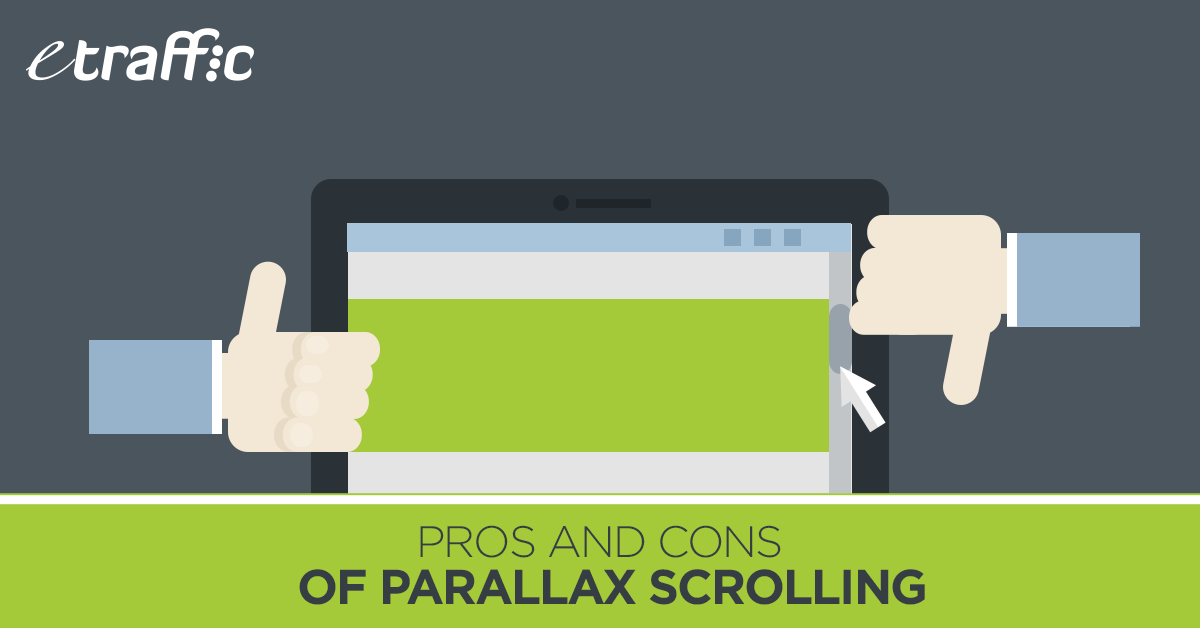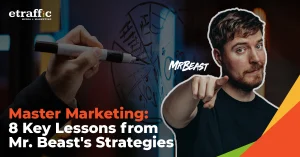![]() Posted by Cameron Francis
on
14 Aug , 2015
in
Web Design & Development
Posted by Cameron Francis
on
14 Aug , 2015
in
Web Design & Development

You cannot talk about top trends in web design without mentioning parallax scrolling. The topic is hot and has attracted the most debate in the web design industry.
Parallax website design is a new approach to web scrolling that transforms an entire website into a single visually stimulating page.
The graphic components of a parallax website appear to be at different distances within the interface. The design utilises a double layer technology with foreground layers that move faster than the images on the background as the page is being scrolled.
Looking at the graphics, you’ll notice the background images appear to be far away or deeper. This is an illusion that the design intends to create. It succeeds in bringing an element of depth in a two-dimensional design.
The result is deep sense of engagement and enhanced interactivity. Parallax scrolling takes a storytelling approach. It guides you down the message plot carried on a single page.
Parallax marks an important turning point in website design. It comes at a time when the average Web user is extremely picky with their online experience and more demanding than ever.
Users demand beautiful images, great typography and interesting graphic elements. And parallax scrolling comes to the rescue in delivering an awesome web experience.
Pros of Parallax Scrolling
This web design technique offers visually stimulating navigation. This is a big plus for parallax scrolling. Ordinary websites will consist of several pages, each with a standard top-down scrolling experience. Parallax, on the other hand, provides a sophisticated mix of movements with a single scroll through.
Different motion effects are possible with parallax scrolling. Images and text move in every imaginable direction with a wide array of popup and fading images.
You can be creative and stand out. You do not have to worry about conforming with traditional navigation styles in parallax web design. Here, you can improvise on anything that enhances your user experience.
Other than scrolling down the webpage, you can utilise navigation links at the top or margins of the page. These links help users skip to other sections of the page.
Parallax scrolling technology succeeds in making sites look modern and creative. There is no limit to the effects you can create. This technique can help unleash your creative self to create a site that stands out from the rest.
Parallax scrolling allows you to personalise your work. The visual effects will depend on your individual tastes and level of imagination.
You can add different effects to your web page such as icon movement, enlargement or minimisation.
Parallax scrolling livens a site that has little information
This design paradigm is highly suitable for a website that offers little information. It saves designers considerable time in making an otherwise uninteresting site more appealing and visually engaging.
This approach to helps liven up the whole site with its dexterous use of floating images and cascading transitions.
More audience engagement
Another essential feature of parallax scrolling is that it is highly interactive, which keeps the audience irresistibly hooked. This creates greater user engagement compared to other website designs.
The parallax website looks cool and its visitors keep scrolling to see what comes next. They are likely to view the entire site without noticing how much they have covered. It sums up the information in an easy to understand and beautiful manner.
This deeply engaging experience makes visitors want to stay longer on the website. The appealing visual effects are likely to keep users interested in seeing more of the site, which may eventually draw more traffic.
Cons of parallax scrolling
Most of the advantages of parallax scrolling come from its visual appeal. However, this design approach has weaknesses in certain areas that conventional webpages excel in. Here are the cons associated with this kind of design.
1. Slow loading speeds
Parallax scrolling is achieved by excessive use of embedded codes, making it significantly heavy. The slow loading speed puts the site at risk of losing impatient visitors. The slow load speed may also hurt the site’s SEO while decreasing search conversion rates.
Another blow to parallax websites is that scrolling is not as smooth on mobile devices as on desktop or laptop computers. Yet most people today log onto the internet from mobile devices. This is likely to hurt the site’s popularity.
2. SEO concerns
The main concern marketers are raising against parallax scrolling revolves around Search Engine Optimisation. The one extensive page that comprises a parallax website means that all the site’s SEO tools are compressed together.
The principles of sound SEO require that these tools are spread out to different pages and are well balanced out. But that balance is not possible with a parallax website.
3. No internal page linking
Links between pages of the same website often help boost page ranking. But parallax design does not allow for internal linking of pages. The design utilises only a single URL for all the website content. This further hurts the site’s search visibility since search engines like Google will index only a single page on their search results.
Conclusion
So, while a parallax website can be extremely beautiful and capable of creating a positive user experience, it has a few drawbacks when it comes to online marketing.
However, many experienced web agencies disagree. They argue that
- Parallax sites can have more than one page
- The SEO limitations can be fixed
So if you’re thinking of building a parallax website, going it alone can be a lengthy and costly process. Even if you are computer savvy, your time is much better spent running your business. Find an innovative web agency to help bring your website in the limelight.
Hiring a parallax expert might be expensive upfront, but it comes out cheaper in the long run and with less headache on your part. In the end you will be rewarded with a website that is visually appealing, highly engaging and converts well.






